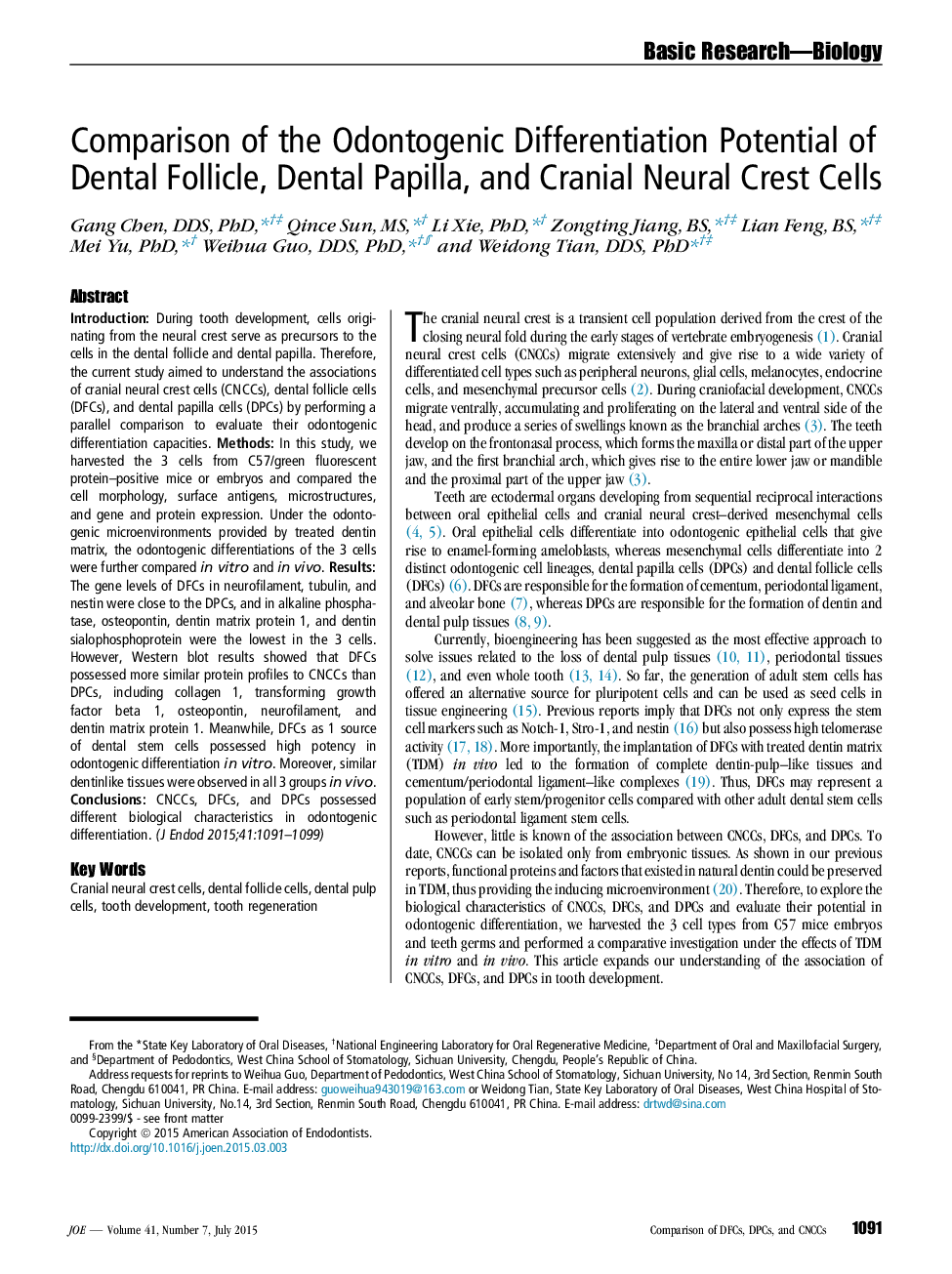| کد مقاله | کد نشریه | سال انتشار | مقاله انگلیسی | نسخه تمام متن |
|---|---|---|---|---|
| 3147468 | 1197365 | 2015 | 9 صفحه PDF | دانلود رایگان |
• Dental follicle cells (DFCs) and dental pulp cells (DPCs) not only keep the features of CNCCs but also present the characteristics of dental stem cells.
• In the in vitro culture microenvironment, DFCs tends to present the characteristics of mature odontoblasts, but DPC tends to differentiate into osteoblasts.
• In the odontogenic microenvironment supplied by treated dentin matrix in vitro and in vivo, DFCs possess the similar dentinogenic potency as well as DPCs and CNCCs.
IntroductionDuring tooth development, cells originating from the neural crest serve as precursors to the cells in the dental follicle and dental papilla. Therefore, the current study aimed to understand the associations of cranial neural crest cells (CNCCs), dental follicle cells (DFCs), and dental papilla cells (DPCs) by performing a parallel comparison to evaluate their odontogenic differentiation capacities.MethodsIn this study, we harvested the 3 cells from C57/green fluorescent protein–positive mice or embryos and compared the cell morphology, surface antigens, microstructures, and gene and protein expression. Under the odontogenic microenvironments provided by treated dentin matrix, the odontogenic differentiations of the 3 cells were further compared in vitro and in vivo.ResultsThe gene levels of DFCs in neurofilament, tubulin, and nestin were close to the DPCs, and in alkaline phosphatase, osteopontin, dentin matrix protein 1, and dentin sialophosphoprotein were the lowest in the 3 cells. However, Western blot results showed that DFCs possessed more similar protein profiles to CNCCs than DPCs, including collagen 1, transforming growth factor beta 1, osteopontin, neurofilament, and dentin matrix protein 1. Meanwhile, DFCs as 1 source of dental stem cells possessed high potency in odontogenic differentiation in vitro. Moreover, similar dentinlike tissues were observed in all 3 groups in vivo.ConclusionsCNCCs, DFCs, and DPCs possessed different biological characteristics in odontogenic differentiation.
Journal: Journal of Endodontics - Volume 41, Issue 7, July 2015, Pages 1091–1099
